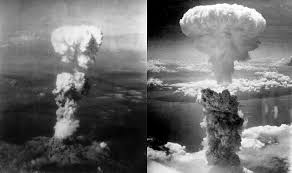Hiroshima Peace Memorial Museum
Located in Hiroshima, Japan, the Hiroshima Peace Memorial Museum stands as a solemn reminder of the devastating atomic bombing that occurred during World War II. Established in August 1955, the museum serves as a dedicated space for documenting the events and consequences of the atomic bombing of Hiroshima. Recently, Prime Minister Modi, along with other participating leaders of the G7 Summit, visited this museum.
Preserving the Legacy
The Peace Memorial Museum’s collection is a poignant testament to the tragedy that unfolded in Hiroshima. Belongings left by the victims, photographs, and other materials offer a glimpse into the horror of the atomic bombing. Each item on display represents the grief, anger, and pain of real people, ensuring their stories are never forgotten.
Divided for Deeper Understanding
In 1994, the museum underwent renovations, leading to its division into two sections: the East Wing and the West Wing. The East Wing serves as a comprehensive resource, delving into the history of Hiroshima, the decision to drop the bomb, the lives of citizens during and after the bombing, and the ongoing efforts for international peace. The West Wing, part of the original museum, focuses on the physical and human toll of the bomb, highlighting the damage caused by the heat rays, blast, and radiation effects.
A Journey of Renewal
In 2014, the Hiroshima Peace Memorial Museum embarked on a major renovation project. The East Wing reopened in April 2017, offering more interactive displays and a new model utilizing projection mapping to vividly demonstrate the effects of the bomb blast. The exhibits were also refreshed during this period, emphasizing the personal belongings of the victims and showcasing their enduring impact.
A Symbol of Global Commitment
The significance of the Hiroshima Peace Memorial Museum extends beyond its walls. It became a beacon of hope when the Group of Seven (G-7) leaders made an unprecedented joint visit to the museum. Leaders from the United States, France, Britain, and other nuclear powers expressed their commitment to a world free of nuclear weapons, acknowledging the museum’s role in raising awareness about the consequences of such weaponry.
Month: Current Affairs - May, 2023
Category: International / World Current Affairs • Places in News Current Affairs


